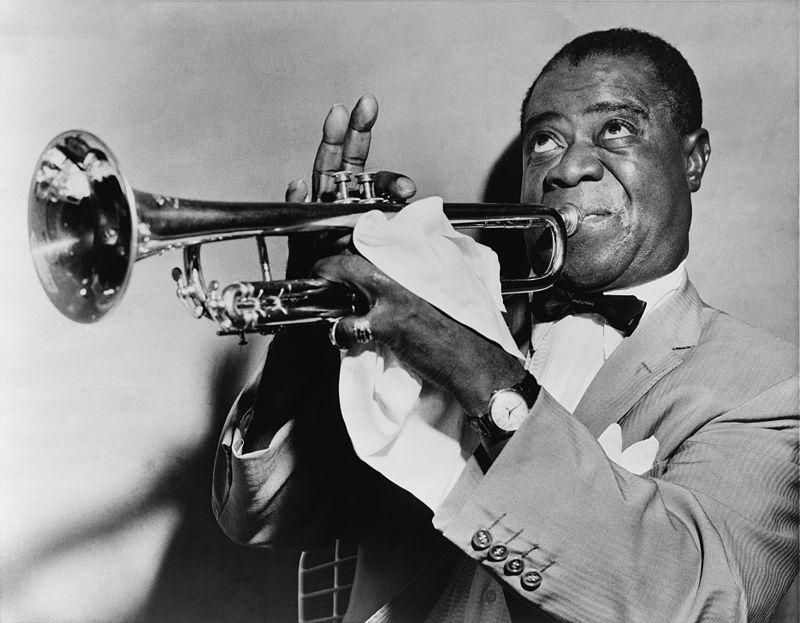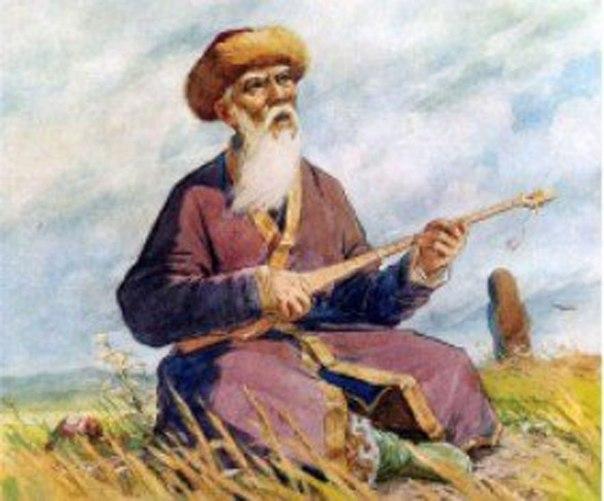Jazz is a music genre that originated amongst African Americans in New Orleans, United States, in the late 19th and early 20th centuries. Since the 1920s jazz age, jazz has become recognized as a major form of musical expression. It emerged in the form of independent traditional and popular musical styles, all linked by the common bonds of African American and European American musical parentage with a performance orientation. Jazz is characterized by swing and blue notes, call and response vocals, polyrhythm’s and improvisation. Jazz has roots in West African cultural and musical expression, and in African-American music traditions including blues and ragtime, as well as European military band music. Although the foundation of jazz is deeply rooted within the Black experience of the United States, different cultures have contributed their own experience and styles to the art form as well. Intellectuals around the world have hailed jazz as "one of America's original art forms".
As jazz spread around the world, it drew on different national, regional, and local musical cultures, which gave rise to many distinctive styles. New Orleans jazz began in the early 1910s, combining earlier brass-band marches, French quadrilles, biguine, ragtime and blues with collective polyphonic improvisation. In the 1930s, heavily arranged dance-oriented swing big bands, Kansas City jazz, a hard-swinging, bluesy, improvisational style and Gypsy jazz (a style that emphasized musette waltzes) were the prominent styles. Bebop emerged in the 1940s, shifting jazz from danceable popular music toward a more challenging "musician's music" which was played at faster tempos and used more chord-based improvisation. Cool jazz developed in the end of the 1940s, introducing calmer, smoother sounds and long, linear melodic lines.
The 1950s saw the emergence of free jazz, which explored playing without regular meter, beat and formal structures, and in the mid-1950s, hard bop emerged, which introduced influences from rhythm and blues, gospel, and blues, especially in the saxophone and piano playing. Modal jazz developed in the late 1950s, using the mode, or musical scale, as the basis of musical structure and improvisation. Jazz-rock fusion appeared in the late 1960s and early 1970s, combining jazz improvisation with rock music's rhythms, electric instruments and highly amplified stage sound. In the early 1980s, a commercial form of jazz fusion called smooth jazz became successful, garnering significant radio airplay. Other styles and genres abound in the 2000s, such as Latin and Afro-Cuban jazz.
Rock
Rock music is a genre of popular music that originated as "rock and roll" in the United States in the 1950s, and developed into a range of different styles in the 1960s and later, particularly in the United Kingdom and the United States. It has its roots in 1940s and 1950s rock and roll, itself heavily influenced by blues, rhythm and blues and country music. Rock music also drew strongly on a number of other genres such as electric blues and folk, and incorporated influences from jazz, classical and other musical sources.
Musically, rock has centered on the electric guitar, usually as part of a rock group with electric bass guitar and drums. Typically, rock is song-based music usually with a 4/4 time signature using a verse-chorus form, but the genre has become extremely diverse. Like pop music, lyrics often stress romantic love but also address a wide variety of other themes that are frequently social or political in emphasis.
By the late 1960s, referred to as the "golden age" or "classic rock" period, a number of distinct rock music subgenres had emerged, including hybrids like blues rock, folk rock, country rock, raga rock, and jazz-rock, many of which contributed to the development of psychedelic rock, which was influenced by the countercultural psychedelic scene. New genres that emerged from this scene included progressive rock, which extended the artistic elements; glam rock, which highlighted showmanship and visual style; and the diverse and enduring subgenre of heavy metal, which emphasized volume, power, and speed. In the second half of the 1970s, punk rock reacted against the perceived overblown, inauthentic and overly mainstream aspects of these genres to produce a stripped-down, energetic form of music valuing raw expression and often lyrically characterised by social and political critiques. Punk was an influence into the 1980s on the subsequent development of other subgenres, including new wave, post-punk and eventually the alternative rock movement. From the 1990s alternative rock began to dominate rock music and break through into the mainstream in the form of grunge, Britpop, and indie rock. Further fusion subgenres have since emerged, including pop punk, rap rock, and rap metal, as well as conscious attempts to revisit rock's history, including the garage rock/post-punk and synthpop revivals at the beginning of the new millennium.
Rock music has also embodied and served as the vehicle for cultural and social movements, leading to major sub-cultures including mods and rockers in the UK and the hippie counterculture that spread out from San Francisco in the US in the 1960s. Similarly, 1970s punk culture spawned the visually distinctive goth and emo subcultures. Inheriting the folk tradition of the protest song, rock music has been associated with political activism as well as changes in social attitudes to race, sex and drug use, and is often seen as an expression of youth revolt against adult consumerism and conformity.
 KUI
KUI
When the art of kui had been strengthened, the traditional schools were formed in Kazakh region according to geographical, historical and cultural factors. From the geographical point of view and traditional similarities they are divided into several cultural areas. According to this traditional schools are in following territories : West, Arka and Zhetisu. Such kind of dividing are because of art of kui is divided into two big traditions according to. In performance style they are called tokpe and shertpe. In tokpe tradition are performed music of West region which are strong and burst in Arka. In tokpe tradition are peformed music of west region which are strong , The term “tokpe” came out from the word “togu” (to spill).,i.e to play with enormous power. Shertpe is belong to Arka(central, northern, eastern Kazakhstan regions), Zhetisu, Southern or Karatau regions’ schools. The kuis of this tradition are calm in stress and full of mystery ideas and deep thoughts
Nation instrumental traditions in different regions of Kazakhstan historically developed like performance school, as a rule it is connected with favourite creative personality. It won’t be overstatement to say , that every well-known figure , gifted musician can be the head of the whole stream, direction or a new schools as it had done Kurmangazi, Tattimbet, Kazangap, Dauletkerei, Sugir. There are 8 dombyra traditional schools:
First, it is school of Kurmangazi(grandfather of kui) and his follower(grandmother of kui). This is tradition of western Kazakhstan. Creative work of Kurmangazi presents obvious features of innovation and style of Western Kazakhstan traditional kui tokpe. His famous kuis as “Aman bol sheshem aman bol”, “Kairan sheshem”, “Kisen ashkan” and others have autobiographical character. Kuis “Saryarka”, “Adai”, “Balbiraun” reflected powerful movement of collective life and soul of people; they became musical symbols of Kazakhstan. The main pecularity of kuis of Kurmangazi are energy, dynamics and powerful gust.
Dina Nurpeisova is kuishi, who combined the tradition of 19-20thcenturies on her
creative work, dynamism of Kurmangazi school, philosophic and aristocratic traditions of Dauletkerei. Her popular kuis are “Asem konyr”, “Bulbul”, “Zhiger”. Second shool is connected with the name of kuishi Dauletkerei. He made great contribution to Kazakh instrumental music. And his kuis called “tore kuis” among people, because they philosophically concentrated and deep on thoughts.
Third school is founded by Kazangap. His legacy in a great volume takes great stand in Kazakh classical instrumental music of 19, th 20th centuries. It is considered
that exactly Kazangap performed all sixty-two “Akzhelens”. Akzhelen is a designation of instrumental piece of genre.
Fourth School is devoted to original instrumental tradition of Western Kazakhstan, tradition of Mangistau. It is characterized by high level of instrumentalism development and considerable peforming and creative pecularity. Names of Mangistau composers Abyl, Esbai, Esir, Kulshar, Oskenbai and Murat Uskenbayev are well-known to the world of Kazakh instrumental music.
Fifth school is the tradition of Arka. Arka is large region in the centre of Kazakhstan. A central figure of instrumental tradition of Arka is Tattimbet. A legendary appearance of him is founded not only due to several dozens of his brilliant kuis, but also traditions and original historical information. Lyrical music of Tattimbet kuis generalizes at high levels human emotions and spiritual experience. His kuis “Kosbasar”, “Sari Zhailau”, “Bilkildak”, “Silkildak”, “Bestore” took natural place of classic of Kazakh musical culture.
Sixth school is Eastern Kazakhstan. Instrumental tradition of Eastern Kazakhstan is broad and little studied in musical relation region is reach and varied. The form and structure of this region’s kuis reflect an ancient basis of musical creature a sound system of natural structure. We can say that Baizhigit’s school of kui is leader among kuishies in the East Kazakhstan. There are a lot of old tunes in his kuis.
Seventh school is devoted to an instrumental tradition of Zhetisu. For this tradition absolutely represents an interesting and rich regional instrumental style, it has not yet got a proper fame and recognition. The tradition of Zhetisu is closely connected with the tradition of Eastern Kazakhstan and culture of Kazakhs, who live in China and Mongolia.
The eighth school is instrumental tradition of Karatau region. This instrumental tradition shertpe, without doubt, successfully connected with the tradition of Arka, heritage of Tattimbet, Toka and Dairabai. According to site a central figure of this tradition is Sugur, brilliant musician, who left a deep trace in the history of Kazakh instrumental tradition.
In conclusion, each of these traditional schools is like big, unreachable ocean where a great musical heritage is.
Просмотр содержимого документа
«Документ к презентациям на английском языке "Джаз,рок,кюй"»
 Jazz
Jazz
Jazz is a music genre that originated amongst African Americans in New Orleans, United States, in the late 19th and early 20th centuries. Since the 1920s jazz age, jazz has become recognized as a major form of musical expression. It emerged in the form of independent traditional and popular musical styles, all linked by the common bonds of African American and European American musical parentage with a performance orientation. Jazz is characterized by swing and blue notes, call and response vocals, polyrhythm’s and improvisation. Jazz has roots in West African cultural and musical expression, and in African-American music traditions including blues and ragtime, as well as European military band music. Although the foundation of jazz is deeply rooted within the Black experience of the United States, different cultures have contributed their own experience and styles to the art form as well. Intellectuals around the world have hailed jazz as "one of America's original art forms".
As jazz spread around the world, it drew on different national, regional, and local musical cultures, which gave rise to many distinctive styles. New Orleans jazz began in the early 1910s, combining earlier brass-band marches, French quadrilles, biguine, ragtime and blues with collective polyphonic improvisation. In the 1930s, heavily arranged dance-oriented swing big bands, Kansas City jazz, a hard-swinging, bluesy, improvisational style and Gypsy jazz (a style that emphasized musette waltzes) were the prominent styles. Bebop emerged in the 1940s, shifting jazz from danceable popular music toward a more challenging "musician's music" which was played at faster tempos and used more chord-based improvisation. Cool jazz developed in the end of the 1940s, introducing calmer, smoother sounds and long, linear melodic lines.
The 1950s saw the emergence of free jazz, which explored playing without regular meter, beat and formal structures, and in the mid-1950s, hard bop emerged, which introduced influences from rhythm and blues, gospel, and blues, especially in the saxophone and piano playing. Modal jazz developed in the late 1950s, using the mode, or musical scale, as the basis of musical structure and improvisation. Jazz-rock fusion appeared in the late 1960s and early 1970s, combining jazz improvisation with rock music's rhythms, electric instruments and highly amplified stage sound. In the early 1980s, a commercial form of jazz fusion called smooth jazz became successful, garnering significant radio airplay. Other styles and genres abound in the 2000s, such as Latin and Afro-Cuban jazz.
 Rock
Rock
Rock music is a genre of popular music that originated as "rock and roll" in the United States in the 1950s, and developed into a range of different styles in the 1960s and later, particularly in the United Kingdom and the United States. It has its roots in 1940s and 1950s rock and roll, itself heavily influenced by blues, rhythm and blues and country music. Rock music also drew strongly on a number of other genres such as electric blues and folk, and incorporated influences from jazz, classical and other musical sources.
Musically, rock has centered on the electric guitar, usually as part of a rock group with electric bass guitar and drums. Typically, rock is song-based music usually with a 4/4 time signature using a verse-chorus form, but the genre has become extremely diverse. Like pop music, lyrics often stress romantic love but also address a wide variety of other themes that are frequently social or political in emphasis.
By the late 1960s, referred to as the "golden age" or "classic rock" period, a number of distinct rock music subgenres had emerged, including hybrids like blues rock, folk rock, country rock, raga rock, and jazz-rock, many of which contributed to the development of psychedelic rock, which was influenced by the countercultural psychedelic scene. New genres that emerged from this scene included progressive rock, which extended the artistic elements; glam rock, which highlighted showmanship and visual style; and the diverse and enduring subgenre of heavy metal, which emphasized volume, power, and speed. In the second half of the 1970s, punk rock reacted against the perceived overblown, inauthentic and overly mainstream aspects of these genres to produce a stripped-down, energetic form of music valuing raw expression and often lyrically characterised by social and political critiques. Punk was an influence into the 1980s on the subsequent development of other subgenres, including new wave, post-punk and eventually the alternative rock movement. From the 1990s alternative rock began to dominate rock music and break through into the mainstream in the form of grunge, Britpop, and indie rock. Further fusion subgenres have since emerged, including pop punk, rap rock, and rap metal, as well as conscious attempts to revisit rock's history, including the garage rock/post-punk and synthpop revivals at the beginning of the new millennium.
Rock music has also embodied and served as the vehicle for cultural and social movements, leading to major sub-cultures including mods and rockers in the UK and the hippie counterculture that spread out from San Francisco in the US in the 1960s. Similarly, 1970s punk culture spawned the visually distinctive goth and emo subcultures. Inheriting the folk tradition of the protest song, rock music has been associated with political activism as well as changes in social attitudes to race, sex and drug use, and is often seen as an expression of youth revolt against adult consumerism and conformity.
KUI
When the art of kui had been strengthened, the traditional schools were formed in Kazakh region according to geographical, historical and cultural factors. From the geographical point of view and traditional similarities they are divided into several cultural areas. According to this traditional schools are in following territories : West, Arka and Zhetisu. Such kind of dividing are because of art of kui is divided into two big traditions according to. In performance style they are called tokpe and shertpe. In tokpe tradition are performed music of West region which are strong and burst in Arka. In tokpe tradition are peformed music of west region which are strong , The term “tokpe” came out from the word “togu” (to spill).,i.e to play with enormous power. Shertpe is belong to Arka(central, northern, eastern Kazakhstan regions), Zhetisu, Southern or Karatau regions’ schools. The kuis of this tradition are calm in stress and full of mystery ideas and deep thoughts
Nation instrumental traditions in different regions of Kazakhstan historically developed like performance school, as a rule it is connected with favourite creative personality. It won’t be overstatement to say , that every well-known figure , gifted musician can be the head of the whole stream, direction or a new schools as it had done Kurmangazi, Tattimbet, Kazangap, Dauletkerei, Sugir. There are 8 dombyra traditional schools:
First, it is school of Kurmangazi(grandfather of kui) and his follower(grandmother of kui). This is tradition of western Kazakhstan. Creative work of Kurmangazi presents obvious features of innovation and style of Western Kazakhstan traditional kui tokpe. His famous kuis as “Aman bol sheshem aman bol”, “Kairan sheshem”, “Kisen ashkan” and others have autobiographical character. Kuis “Saryarka”, “Adai”, “Balbiraun” reflected powerful movement of collective life and soul of people; they became musical symbols of Kazakhstan. The main pecularity of kuis of Kurmangazi are energy, dynamics and powerful gust.
Dina Nurpeisova is kuishi, who combined the tradition of 19-20thcenturies on her
creative work, dynamism of Kurmangazi school, philosophic and aristocratic traditions of Dauletkerei. Her popular kuis are “Asem konyr”, “Bulbul”, “Zhiger”. Second shool is connected with the name of kuishi Dauletkerei. He made great contribution to Kazakh instrumental music. And his kuis called “tore kuis” among people, because they philosophically concentrated and deep on thoughts.
Third school is founded by Kazangap. His legacy in a great volume takes great stand in Kazakh classical instrumental music of 19, th 20th centuries. It is considered
that exactly Kazangap performed all sixty-two “Akzhelens”. Akzhelen is a designation of instrumental piece of genre.
Fourth School is devoted to original instrumental tradition of Western Kazakhstan, tradition of Mangistau. It is characterized by high level of instrumentalism development and considerable peforming and creative pecularity. Names of Mangistau composers Abyl, Esbai, Esir, Kulshar, Oskenbai and Murat Uskenbayev are well-known to the world of Kazakh instrumental music.
Fifth school is the tradition of Arka. Arka is large region in the centre of Kazakhstan. A central figure of instrumental tradition of Arka is Tattimbet. A legendary appearance of him is founded not only due to several dozens of his brilliant kuis, but also traditions and original historical information. Lyrical music of Tattimbet kuis generalizes at high levels human emotions and spiritual experience. His kuis “Kosbasar”, “Sari Zhailau”, “Bilkildak”, “Silkildak”, “Bestore” took natural place of classic of Kazakh musical culture.
Sixth school is Eastern Kazakhstan. Instrumental tradition of Eastern Kazakhstan is broad and little studied in musical relation region is reach and varied. The form and structure of this region’s kuis reflect an ancient basis of musical creature a sound system of natural structure. We can say that Baizhigit’s school of kui is leader among kuishies in the East Kazakhstan. There are a lot of old tunes in his kuis.
Seventh school is devoted to an instrumental tradition of Zhetisu. For this tradition absolutely represents an interesting and rich regional instrumental style, it has not yet got a proper fame and recognition. The tradition of Zhetisu is closely connected with the tradition of Eastern Kazakhstan and culture of Kazakhs, who live in China and Mongolia.
The eighth school is instrumental tradition of Karatau region. This instrumental tradition shertpe, without doubt, successfully connected with the tradition of Arka, heritage of Tattimbet, Toka and Dairabai. According to site a central figure of this tradition is Sugur, brilliant musician, who left a deep trace in the history of Kazakh instrumental tradition.
In conclusion, each of these traditional schools is like big, unreachable ocean where a great musical heritage is.







 KUI
KUI Jazz
Jazz Rock
Rock










